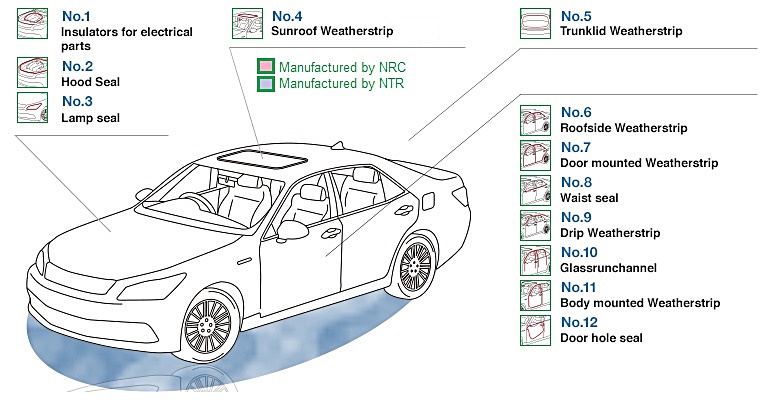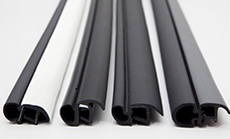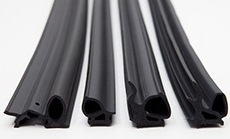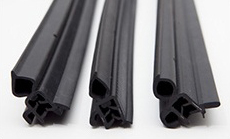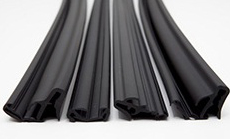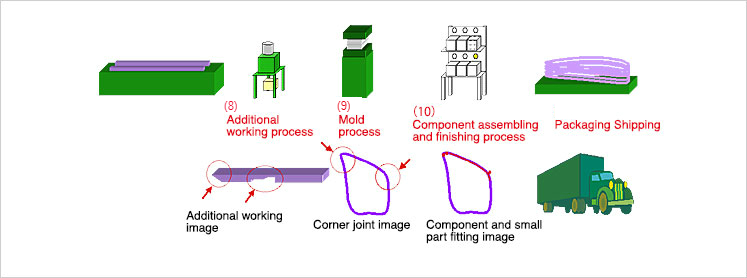| 8. Additional working process |
- In this process, the workpiece that has been cut or shaped from the extrusion process is trimmed, cut, pierced, coated, or worked on with other types of internally invented machines in order to maintain and elevate the production quality and quantity.
|
| 9. Mold process |
- The process in which the end of the cut workpiece is pressed in a mold and metal parts. The mold and the internally designed molding machine help adjoining several cut pieces together.
|
| 10. Components assembling and finishing process |
- The final process follows the forming process. In this process, all parts such as adhesive tape are assembled together with the workpiece into the final product.
|
